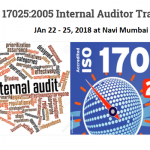ISO 9001 certification steps
1. Learn about ISO 9001
The first thing you should do is educate yourself on what ISO 9001:2000 Quality Management Standards (QMS) means, what certification entails, and how ISO certification will help your business.
2. Evaluate Your Quality System and Start The Implementation Project
Assess your current quality system using a gap analysis check sheet and then make sure that management will commit a sufficient level of resources to complete the project. Review the implementation cost articles to get the big picture of the cost. Save the gap analysis for later use as an internal audit (once you have an internal audit system).
3. Develop the Implementation Plan and Quality Goals
Develop the quality objectives, quality statement and project scope. Use the samples on this web site as a basis for developing quantifiable quality objectives and a quality statement that is memorable and fulfills the ISO requirements for a customer focus. Create an implementation plan with a timeline, cost and resources. Submit the plan to management and get approval.
4. Create the Documentation Control Procedures
Establish your document control first so that you have an established system for creating your other documents and for maintaining revision control of all quality documents. All the documents that you create should have unique tracking numbers and revisions. The documentation control process is used in conjunction with the engineering change order (ECO) system to maintain revision control.
5. Create the Corrective and Preventive Actions System
In most companies the corrective and preventive actions system is known as the Engineering Request and Order (ECR/ECO) system. Use this system to approve and release all documentation in conjunction with the documentation control procedure. The ECR/ECO system is an excellent area for automation.
6. Generate a Quality Manual
Generate the product flow chart and organization chart for the company as part of the quality manual. The organizational chart should show the quality responsibilities for key personnel like the Quality System Management Representative (QSMR).7. Start Training Employees and Maintaining Training Records
Write the ISO 9001 training procedure and start maintaining a training records notebook. Perform ISO awareness training and log the training in everyone’s training records. Once you have created all your procedures and work instruction, you will record the training of these processes in this notebook.
8. Inventory and Customer Fulfillment Documentation
Create your inventory control, service and customer-fulfillment procedures. You will need to build some history of processing inventory for any internal audit to be worthwhile.
9. Purchasing Control Documentation
Create your purchasing control procedures. Complete some transactions including ordering, receiving, building and shipping product to demonstrate the complete purchasing and inventory management system. Some of the inventory should be nonconforming so the auditor can follow both good and bad materials through the process.
10. Maintaining Nonconforming Materials
Create your nonconforming materials procedure and begin tracking defects in a central database, file or notebook. Make sure that everyone properly labels nonconforming materials. Build some history of nonconforming materials (including corrective actions) before the next internal audit.
11. Design Control
Create your design control procedure and then generate notebooks for all current design projects. Start using revision control on the project specifications. Hopefully you will have some short-term projects that can be completed prior to the next internal audit. The company should have a completed design notebook for the certification audit.
12. Calibration and Maintenance of Equipment
Implement your calibration and maintenance procedures. Enter all production equipment into a database or spreadsheet. Set up a calibration schedule and have all appropriate equipment calibrated. Record the status of each device in the database.
13. Detailed Work Instructions
The Company now has most of your key operational systems in place. Now you can create your detailed work instructions that are used for process control. These procedures may be very simple and may be created dynamically or the processes may be performed by “qualified” personnel without work instructions.
14. Management Review
Perform a management review meeting. Present the quality data that has been collected and discuss goals and ISO status. Log this meeting in your management review notebook.
15. Internal Audit and Closure
You can purchase a turnkey internal audit package or use the internal audit samples on this site. Create the internal audit program including an annual schedule. Choose an internal audit team and perform an internal audit. This audit should be logged in the audit records and should generate corrective actions in the engineering change order system. Close all these corrective actions. If possible, perform another management review to present the status of the new quality system.
16. The Certification Audit
At this point, the Company will have records to show that there is a Quality Systems in place and working so you can choose a Registrar and schedule the certification audit.
17. Continuous Improvement
At successful companies, the improvements never end. ISO 9001 and non-ISO companies need to focus on continuous improvement of the quality of their products, processes and quality system.







